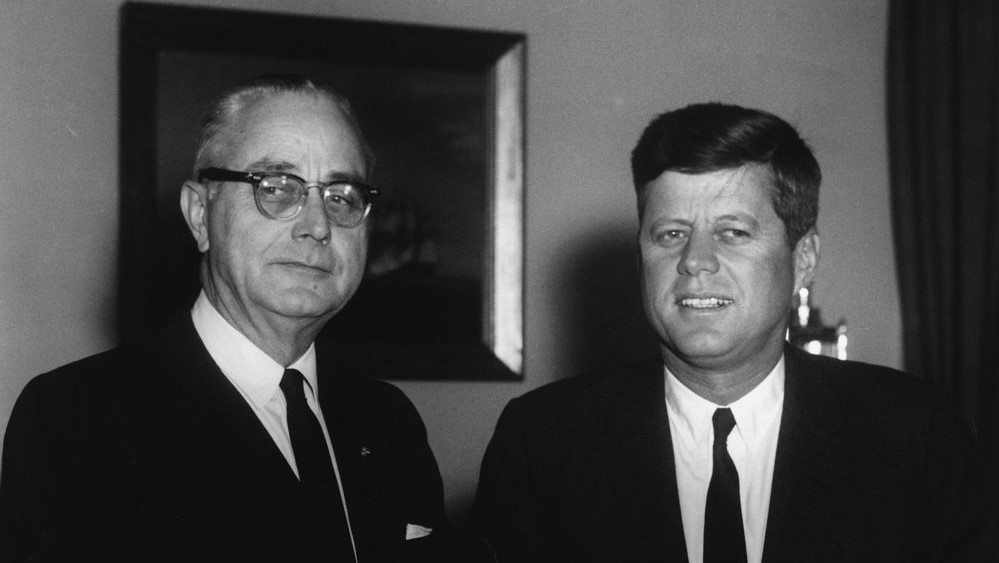Authors:
Historic Era: Era 9: Postwar United States (1945 to early 1970s)
Historic Theme:
Subject:
February/March 2021 | Volume 66, Issue 2


Authors:
Historic Era: Era 9: Postwar United States (1945 to early 1970s)
Historic Theme:
Subject:
February/March 2021 | Volume 66, Issue 2
The Kennedy administration took office under a small political cloud. Allegations of fraud and vote-stealing filled the air in the days following John F. Kennedy's narrow victory in November, 1960, but as president-elect and as president, Kennedy avoided any extended comment on this sensitive subject.
On November 24, 1962, the Department of Defense announced that it was awarding the $6,500,000,000 contract for 1,700 TFX fighter bombers, “the most coveted prize the Pentagon ever dangled before bidders," to the General Dynamics Corporation. The TFX (Tactical Fighter Experimental) became the F-111, a supersonic all-weather attack aircraft capable of carrying nuclear weapons and for low-level, high-speed flight. It was the first production aircraft with variable-sweep wings.
The competition for the contract had been intense for a number of reasons: the utilization of the novel variable-sweep wing would give the winner extremely helpful experience in employing this new technology; it appeared likely that the TFX would be the last major military airplane procurement for the rest of the decade; the huge dimensions of the Pentagon's purchase would keep the successful firm and its subcontractors busy for years.
Secretary of Defense Robert S. McNamara had begun accepting applications for the contract in the fall of 1961, and by the spring of 1962 the contest had narrowed down to two companies: General Dynamics and Boeing. Soon after it was disclosed that General Dynamics had won, Senator Henry Jackson, a Democrat of Washington, the site of Boeing's home offices, asked the Permanent Subcommittee on Investigations to examine circumstances leading to the decision. A preliminary inquiry was started in early December.
Thus commenced “one of the longest and most extensive congressional investigations ever undertaken.” The subcommittee conducted two comprehensive sets of hearings, the first in 1963 and the second in 1970, and it did not submit its report until eight years after the TFX contract had been signed. The 1963 hearings were held on forty-six days between February 26 and November 20 and filled 2740 pages of printed record. Almost all of the sessions were behind closed doors, as requested by the Pentagon, because specific details about the TFX were highly classified; censored transcripts of the proceedings, however, were made public the same day.

Jackson sought the investigation because he had found out that the Pentagon's Source Selection Board, composed of top generals and admirals, had been unanimous in its finding that the Boeing proposal was technically superior to, and less expensive than, the General Dynamics version of the TFX. What Jackson and the subcommittee wanted to know was why McNamara and the civilian secretaries of the air force and the navy had overruled the board and decided “to buy the second